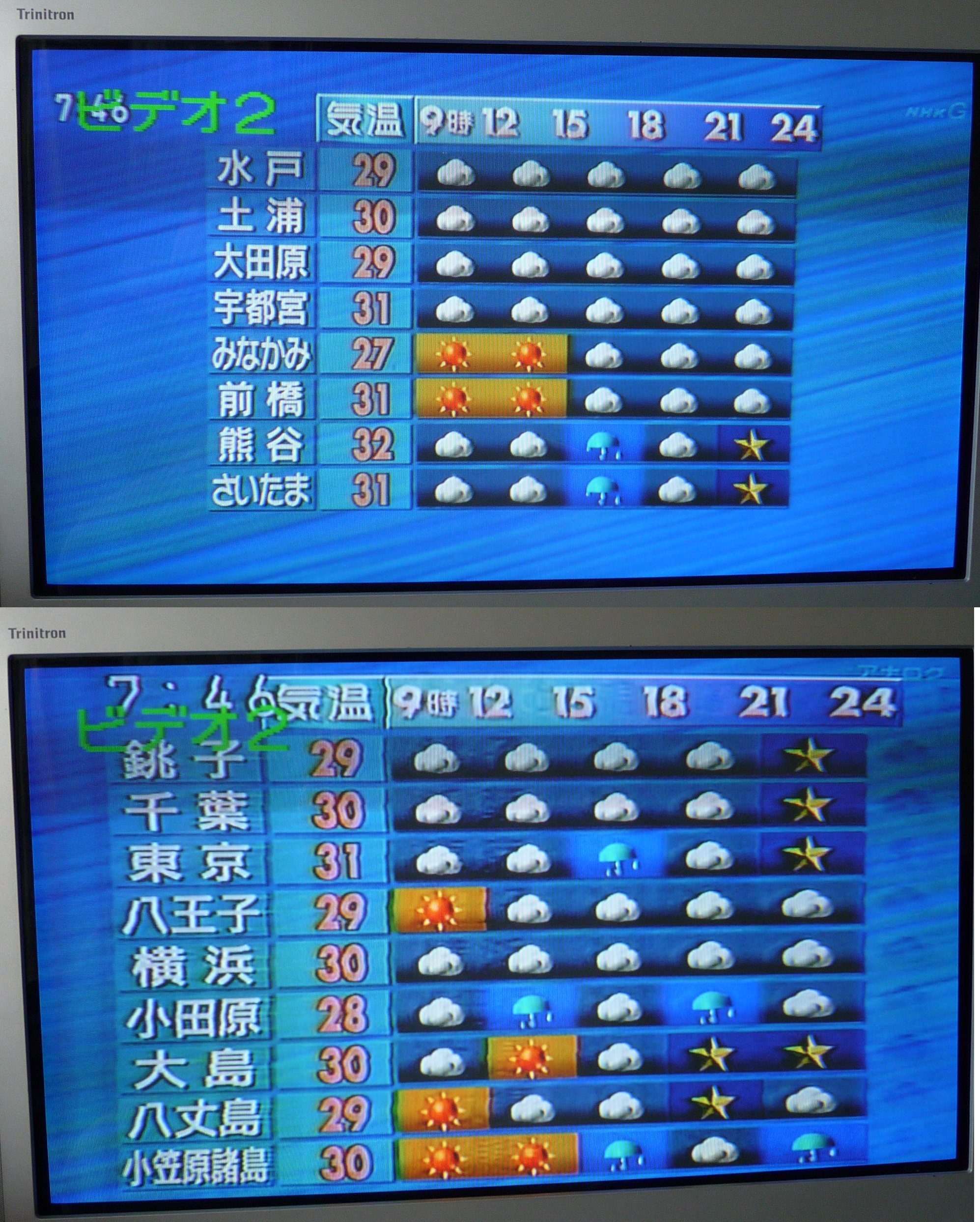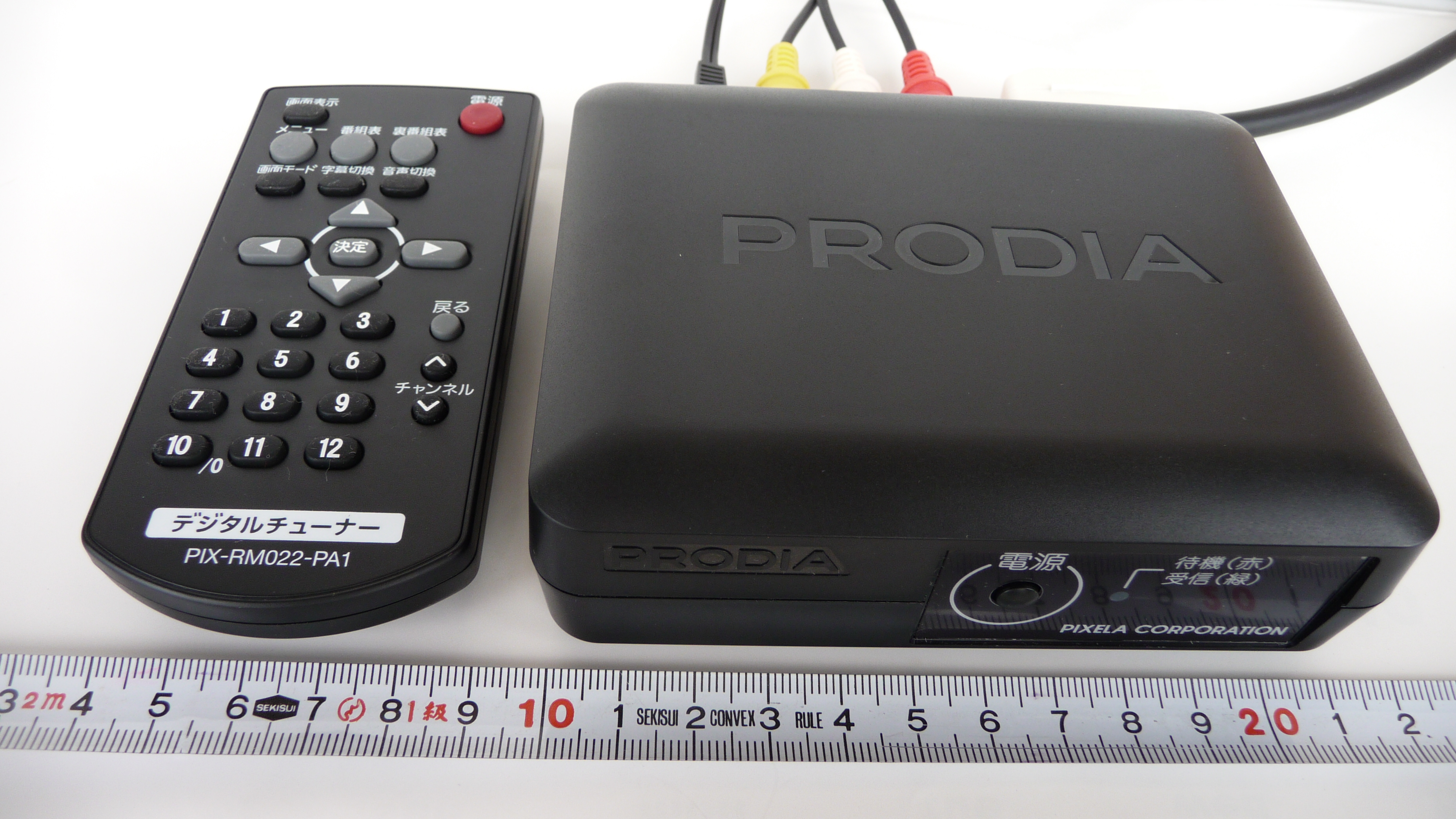|
SBTVD Forum
The SBTVD Forum is a non-profit organization of private and public companies responsible for the general aspects of Digital TV deployment in Brazil. The organization was founded in 2007 in order to address all technical issues regarding the upcoming SBTVD standard, also known as ISDB-Tb (ISDB-T version B). There are over 80 companies members of the SBTVD Forum ranging from all areas of the television industry, including broadcasters, receiver and transmitter manufacturers, universities, software industries and regulatory governmental agencies. Association to the SBTVD Forum is available for all companies regardless of nationality. Standards One of the most important tasks of the SBTVD Forum is the development writing of the technical standards that describe the inner workings of digital television transmission and reception in the Brazil. The standard were written by telecommunications and television experts from many companies and universities and cover in detail all the aspects ... [...More Info...] [...Related Items...] OR: [Wikipedia] [Google] [Baidu] |
SBTVD Forum Logo
ISDB-T International, or SBTVD, short for Sistema Brasileiro de Televisão Digital ( en, Brazilian Digital Television System), is a technical standard for digital television broadcast used in Brazil, Argentina, Peru, Botswana, Chile, Honduras, Venezuela, Ecuador, Costa Rica, Paraguay, Philippines, Bolivia, Nicaragua, El Salvador and Uruguay, based on the Japanese ISDB-T standard. ISDB-T International launched into commercial operation on 2 December 2007, in São Paulo, Brazil, as SBTVD. ISDB-T International is also called ISDB-Tb ( ISDB-T Japanese standard, Brazilian version) and basically differs from original ISDB-T by using H.264/MPEG-4 AVC as a video compression standard (ISDB-T uses H.262/MPEG-2 Part 2), a presentation rate of 30 frames per second even in portable devices (ISDB-T, One seg, uses 15 frame/s for portable devices) and powerful interaction using middleware Ginga, composed by Ginga-NCL and Ginga-J modules (ISDB-T uses BML). The ISDB-T International stan ... [...More Info...] [...Related Items...] OR: [Wikipedia] [Google] [Baidu] |
ABNT NBR 15605
The ABNT NBR 15605 is the technical document of the SBTVD standards that describes in detail aspects regarding content security issues and copy protection, also known as Digital Rights Management (DRM). It's a detailed reference for manufacturers and content providers that aim to coordinate transmission and reception protection systems in a transparent and effective way for mass viewing. The standard was written by telecommunications and television experts from many countries with their works coordinated by the SBTVD Forum and cover in detail all the aspects of video and audio coding that applies to SBTVD. The complete document can be found and downloaded freely in English, Spanish and Portuguese at ABNT's website. Introduction The security aspects of the Brazilian Digital Terrestrial Television Standards are described in a document published by ABNT, the Brazilian Association of Technical Standards (''Associação Brasileira de Normas Técnicas''),ABNT, the Brazilian Association ... [...More Info...] [...Related Items...] OR: [Wikipedia] [Google] [Baidu] |
ISDB
Integrated Services Digital Broadcasting (ISDB; Japanese language, Japanese: , ''Tōgō dejitaru hōsō sābisu'') is a Japanese broadcasting standard for digital television (DTV) and digital radio. ISDB supersedes both the NTSC-J analog television system and the previously used Multiple sub-Nyquist sampling encoding, MUSE Hi-vision analog HDTV system in Japan. An improved version of ISDB-T (ISDB-T International) will soon replace the NTSC, PAL-M, and PAL#PAL-N_(Argentina,_Paraguay_and_Uruguay), PAL-N broadcast standards in South America and the Philippines. Digital terrestrial television, Digital Terrestrial Television Broadcasting (DTTB) services using ISDB-T started in Japan in December 2003, and since then, many countries have adopted ISDB over other digital broadcasting standards. A newer and "advanced" version of the ISDB standard (that will eventually allow up to 8K terrestrial broadcasts and 1080p mobile broadcasts via the Versatile Video Coding, VVC codec, including Hi ... [...More Info...] [...Related Items...] OR: [Wikipedia] [Google] [Baidu] |
Digital Television
Digital television (DTV) is the transmission of television signals using digital encoding, in contrast to the earlier analog television technology which used analog signals. At the time of its development it was considered an innovative advancement and represented the first significant evolution in television technology since color television in the 1950s. Modern digital television is transmitted in high-definition television (HDTV) with greater resolution than analog TV. It typically uses a widescreen aspect ratio (commonly 16:9) in contrast to the narrower format of analog TV. It makes more economical use of scarce radio spectrum space; it can transmit up to seven channels in the same bandwidth as a single analog channel, and provides many new features that analog television cannot. A transition from analog to digital broadcasting began around 2000. Different digital television broadcasting standards have been adopted in different parts of the world; below are the more widel ... [...More Info...] [...Related Items...] OR: [Wikipedia] [Google] [Baidu] |
Non-profit Organisations Based In Brazil
A nonprofit organization (NPO) or non-profit organisation, also known as a non-business entity, not-for-profit organization, or nonprofit institution, is a legal entity organized and operated for a collective, public or social benefit, in contrast with an entity that operates as a business aiming to generate a profit for its owners. A nonprofit is subject to the non-distribution constraint: any revenues that exceed expenses must be committed to the organization's purpose, not taken by private parties. An array of organizations are nonprofit, including some political organizations, schools, business associations, churches, social clubs, and consumer cooperatives. Nonprofit entities may seek approval from governments to be tax-exempt, and some may also qualify to receive tax-deductible contributions, but an entity may incorporate as a nonprofit entity without securing tax-exempt status. Key aspects of nonprofits are accountability, trustworthiness, honesty, and openness to eve ... [...More Info...] [...Related Items...] OR: [Wikipedia] [Google] [Baidu] |
Centro De Pesquisa E Desenvolvimento Em Telecomunicações
CPQD is a Research and Development Center in Telecommunications and one of the largest Latin American R&D centers in Telecommunications and IT. Located in Campinas, São Paulo, Brazil, CPQD has operated as a contractor for institutions and enterprises in a wide range of fields: telecommunications, finance, energy, industrial, corporate and public administration. History CPQD was founded in 1976, as a Telecom research and development center for Telebras. In 1998, with the privatization of Telebras, CPQD became an independent Foundation. Selected projects The CONVERTE Project, started in 2003 in partnership with Trópico Telecomunicações Avançadas, developed new technologies for convergent next-generation networks. CPQD has participated in the development of the Brazilian digital television system (SBTVD ISDB-T International, or SBTVD, short for Sistema Brasileiro de Televisão Digital ( en, Brazilian Digital Television System), is a technical standard for digital ... [...More Info...] [...Related Items...] OR: [Wikipedia] [Google] [Baidu] |
SBTVD Forum Organizational Structure V1
ISDB-T International, or SBTVD, short for Sistema Brasileiro de Televisão Digital ( en, Brazilian Digital Television System), is a technical standard for digital television broadcast used in Brazil, Argentina, Peru, Botswana, Chile, Honduras, Venezuela, Ecuador, Costa Rica, Paraguay, Philippines, Bolivia, Nicaragua, El Salvador and Uruguay, based on the Japanese ISDB-T standard. ISDB-T International launched into commercial operation on 2 December 2007, in São Paulo, Brazil, as SBTVD. ISDB-T International is also called ISDB-Tb (ISDB-T Japanese standard, Brazilian version) and basically differs from original ISDB-T by using H.264/MPEG-4 AVC as a video compression standard (ISDB-T uses H.262/MPEG-2 Part 2), a presentation rate of 30 frames per second even in portable devices (ISDB-T, 1seg, One seg, uses 15 frame/s for portable devices) and powerful interaction using middleware Ginga (SBTVD Middleware), Ginga, composed by Ginga-NCL and Ginga-J modules (ISDB-T uses Broadcast Markup ... [...More Info...] [...Related Items...] OR: [Wikipedia] [Google] [Baidu] |
ABNT NBR 15608
The standard ABNT NBR 15608 describes in further detail the parts of the digital television system that need clarifying, setting directives for implementation in a combination of mandatory and optional features. It can be seen as a refinement of the original specification documents focused on system implementation. The standard was written by telecommunications and television experts from many countries with their works coordinated by the SBTVD Forum and cover in detail all the aspects of video and audio coding that applies to SBTVD. The complete document can be found and downloaded freely in English, Spanish and Portuguese at ABNT's website. Introduction The operational guidelines aspects of the Brazilian Digital Terrestrial Television Standards are described in the following documents published by ABNT, the Brazilian Association of Technical Standards (''Associação Brasileira de Normas Técnicas''):ABNT, the Brazilian Association of Technical Standards (''Associação Brasileir ... [...More Info...] [...Related Items...] OR: [Wikipedia] [Google] [Baidu] |
ABNT NBR 15607
The standard ABNT NBR 15607-1:2008 - Digital terrestrial television – Interactivity channel establishes the ways in which a receiver device can send information back to the broadcaster through different communication mechanisms. The transmission of common broadcasting content will be done through the air through the main programming feed, while a more customized use of content can be sent through the interactive channel. The standard was written by telecommunications and television experts from many countries with their works coordinated by the SBTVD Forum and cover in detail all the aspects of video and audio coding that applies to SBTVD. The complete document can be found and downloaded freely in English, Spanish and Portuguese at ABNT's website. Introduction The interactivity channel aspects of the Brazilian Digital Terrestrial Television Standards are described in document ABNT NBR 15607-1:2008 - Digital terrestrial television – Interactivity channel -Part 1: Protocols, phy ... [...More Info...] [...Related Items...] OR: [Wikipedia] [Google] [Baidu] |
ABNT NBR 15606
ABNT NBR 15606 refers to a collection of technical standards that govern the transmission of digital terrestrial television in Brazil. The data coding aspects of the Brazilian Digital Terrestrial Television Standards are described in the following documents published by ABNT, the Brazilian Association of Technical Standards (''Associação Brasileira de Normas Técnicas''): ABNT NBR 15606-1:2007 - Digital terrestrial television - Data coding and transmission specification - Part 1: Data coding; ABNT NBR 15606-2:2007 - Digital terrestrial television - Data coding and transmission specification - Part 2: Ginga-NCL for fixed and mobile receivers: XML application language for application coding; ABNT NBR 15606-3:2007- Digital terrestrial television - Data coding and transmission specification - Part 3: Data transmission specifications for digital broadcasting; and ABNT NBR 15606-5:2008 - Digital terrestrial television - Data coding and transmission specification – Part 5: Ginga- NCL ... [...More Info...] [...Related Items...] OR: [Wikipedia] [Google] [Baidu] |
ABNT NBR 15604
The ABNT NBR 15604 is the document that describes in detail the mandatory and optional functions and features of receivers for the SBTVD. It's essential for the correct implementation by manufacturers of either fixed, mobile or portable receivers aimed at the Brazilian Digital TV market. The standard was written by telecommunications and television experts from many countries with their works coordinated by the SBTVD Forum and cover in detail all the aspects of video and audio coding that applies to SBTVD. The complete document can be found and downloaded freely in English, Spanish and Portuguese at ABNT's website. Introduction The receiver configuration aspects of the Brazilian Digital Terrestrial Television Standards are described in a document published by ABNT, the Brazilian Association of Technical Standards (''Associação Brasileira de Normas Técnicas''),ABNT, the Brazilian Association of Technical Standards (''Associação Brasileira de Normas Técnicas'') the ABNT NBR 156 ... [...More Info...] [...Related Items...] OR: [Wikipedia] [Google] [Baidu] |
Non-profit
A nonprofit organization (NPO) or non-profit organisation, also known as a non-business entity, not-for-profit organization, or nonprofit institution, is a legal entity organized and operated for a collective, public or social benefit, in contrast with an entity that operates as a business aiming to generate a profit for its owners. A nonprofit is subject to the non-distribution constraint: any revenues that exceed expenses must be committed to the organization's purpose, not taken by private parties. An array of organizations are nonprofit, including some political organizations, schools, business associations, churches, social clubs, and consumer cooperatives. Nonprofit entities may seek approval from governments to be tax-exempt, and some may also qualify to receive tax-deductible contributions, but an entity may incorporate as a nonprofit entity without securing tax-exempt status. Key aspects of nonprofits are accountability, trustworthiness, honesty, and openness to eve ... [...More Info...] [...Related Items...] OR: [Wikipedia] [Google] [Baidu] |





